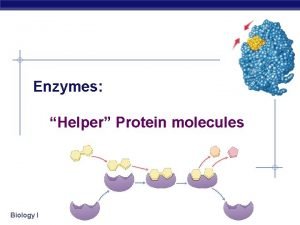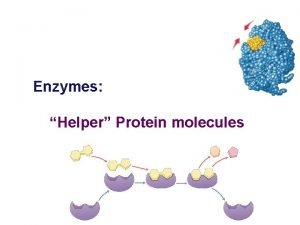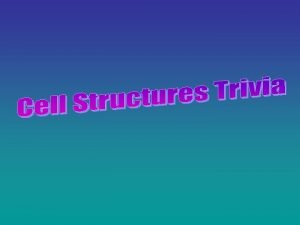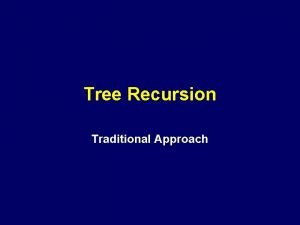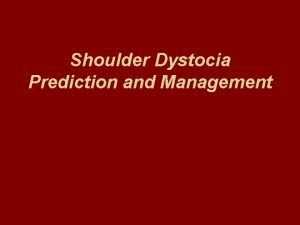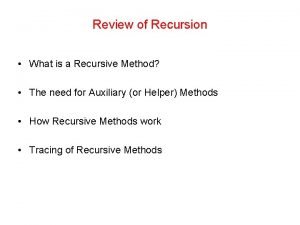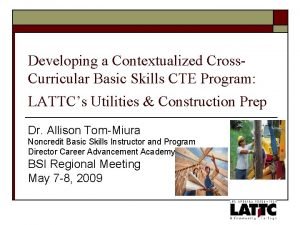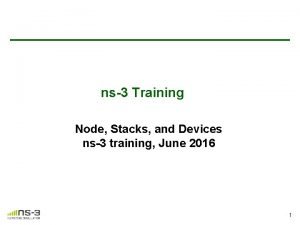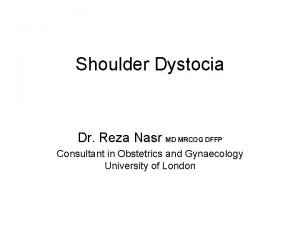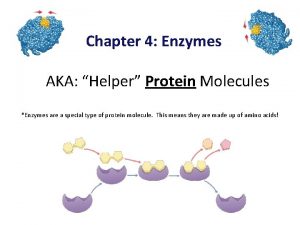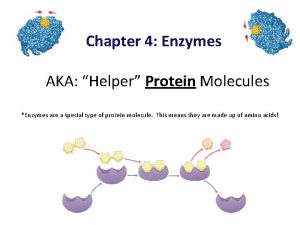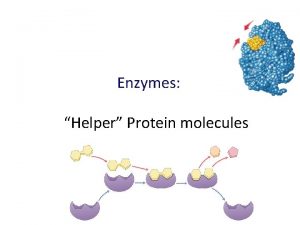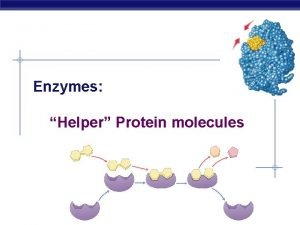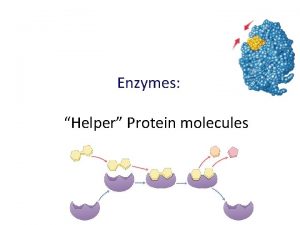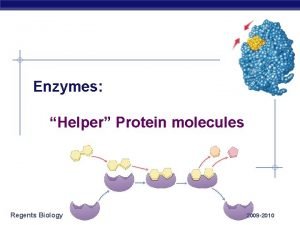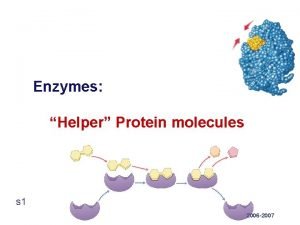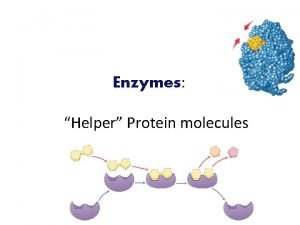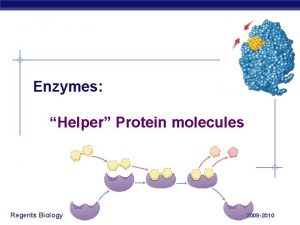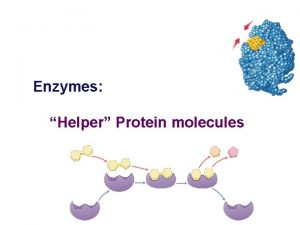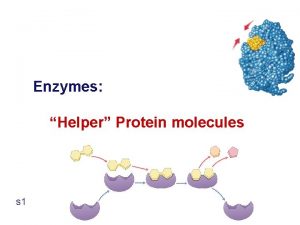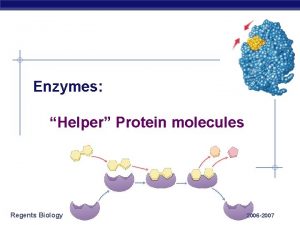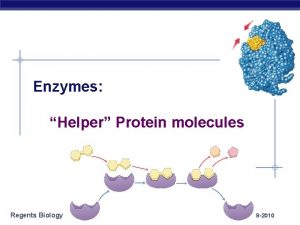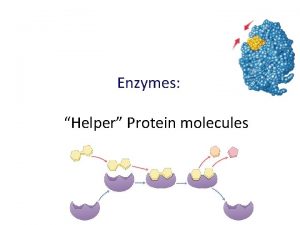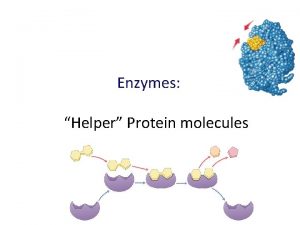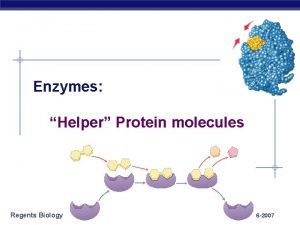Enzymes Helper Protein molecules What are enzymes An






















- Slides: 22

Enzymes: “Helper” Protein molecules

What are enzymes? • An enzyme is a biological catalyst that makes chemical reactions in cells possible.

Examples § synthesis + enzyme § digestion enzyme +

Chemical reactions of life • Enzymes can help in: – building molecules • synthesis + – breaking down molecules • digestion +

Nothing works without enzymes! • How important are enzymes? – all chemical reactions in living organisms require enzymes to work enzyme • building molecules – synthesis enzymes • breaking down molecules We can’t live without enzymes! – digestive enzymes – enzymes speed up reactions • “catalysts” + enzyme +

Enzymes • A protein catalyst • Enzymes are important proteins found in living things. An enzyme is a protein that changes the rate of a chemical reaction. • They speed metabolic reactions.

• Enzymes do not catalyze processes that would not take place on their on. They just make processes take place faster!

Enzymes aren’t used up • Enzymes are not permanently changed or used up in reactions. – used only temporarily – re-used again for the same reaction with other molecules – very little enzyme needed to help in many reactions substrate active site product enzyme

Enzymes are proteins • Each enzyme fits only one specific type of reaction, but can catalyze many of this particular reaction one after another. – each enzyme needs to be the right shape for the job – enzymes are named for the reaction Oh, I get it! they help They end in -ase • • sucrase breaks down sucrose proteases breakdown proteins lipases breakdown lipids DNA polymerase builds DNA

Substrates • Substrate – A molecule that enzymes work on – Substrates undergo chemical changes to form new substances called products. • Products – what the enzyme helps produce from the reaction • Active site – part of enzyme that substrate molecule fits into

It’s shape that matters! • Lock & Key model – shape of protein allows enzyme & substrate to fit – specific enzyme for each specific reaction

Activation Energy • The activation energy of a reaction is the minimum amount of energy needed to start a reaction. • It is like traveling over a hill because the peak represents the activation energy needed for the reaction.

What affects enzyme action • The rate of a reaction depends in part on the shape of the enzyme. If the enzyme is large, its concentration is high, which increases reaction rate. • Correct protein structure – correct order of amino acids – why? enzyme has to be right shape • Temperature • p. H (acids & bases) – why? enzyme has to be right shape

Temperature reaction rate human enzymes 37° temperature What’s happening here? !

Order of amino acids • Wrong order = wrong shape = can’t do its job! chain of amino acids DNA folded protein right shape! folded protein chain of amino acids DNA wrong shape!

Temperature • Effect on rates of enzyme activity – Optimum temperature • greatest number of collisions between enzyme & substrate • human enzymes – 35°- 40°C (body temp = 37°C) – Raise temperature (boiling) • denature protein = unfold = lose shape – Lower temperature T° • molecules move slower • fewer collisions between enzyme & substrate

p. H • Effect on rates of enzyme activity – changes in p. H changes protein shape~ Denatures – most human enzymes = p. H 6 -8 • depends on where in body • pepsin (stomach) = p. H 3 • trypsin (small intestines) = p. H 8

p. H intestines trypsin What’s happening here? ! reaction rate stomach pepsin 0 1 2 3 4 5 6 p. H 7 8 9 10 11 12 13 14

Other important facts about enzymes! • Enzymes are a type of protein! • Enzymes usually end in the suffix –ase. • Examples: – Carbonic anhydrase: removes carbon dioxide from the blood before it becomes toxic. – Lipase: speeds up the digestion of fats – RNA polymerase: speeds up protein production

Enzyme Disorders • PKU: phenylketonuria *Cells fail to make an enzyme that is used to break down phenylalanine. *If phenylalanine builds up in the blood, it can cause death.

• Tay-Sachs: *It is a genetic disease that affects the human brain. *In this disease, cells do not produce an enzyme that breaks down lipids. *Over time, the buildup of lipids in and around the brain cells causes blindness, seizures, and usually death.

For enzymes… What matters? SHAPE!
 Mikael ferm
Mikael ferm Helper protein molecule
Helper protein molecule Helper protein molecule
Helper protein molecule Organic molecules vs inorganic molecules
Organic molecules vs inorganic molecules Preparation of protein molecules for cellular exportation
Preparation of protein molecules for cellular exportation Chapter 12 enzymes the protein catalyst
Chapter 12 enzymes the protein catalyst Protein pump vs protein channel
Protein pump vs protein channel Protein-protein docking
Protein-protein docking Helper chapter 1
Helper chapter 1 Microsoft agent scripting helper
Microsoft agent scripting helper Helper plumber
Helper plumber Melissa darmody
Melissa darmody Shoulder dystocia helper
Shoulder dystocia helper Maths helper online
Maths helper online Helper chapter 1
Helper chapter 1 Holy spirit my helper
Holy spirit my helper Recursive helper method
Recursive helper method Electrical craft helper lattc
Electrical craft helper lattc Internet stack helper ns3
Internet stack helper ns3 Chrome helper gpu
Chrome helper gpu Librarian community helper
Librarian community helper Grammar helper 3
Grammar helper 3 Wood screw maneuver
Wood screw maneuver

